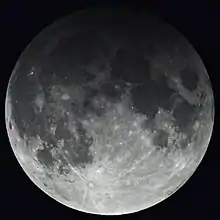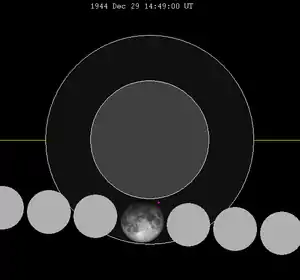
A penumbral lunar eclipse took place on Friday, December 29, 1944. In a rare total penumbral eclipse, the entire Moon was partially shaded by the Earth (though none of it was in complete shadow), and the shading across the Moon should have been quite visible at maximum eclipse. The penumbral phase lasted for 4 hours and 27 minutes in all, though for most of it, the eclipse was extremely difficult or impossible to see.
Visibility
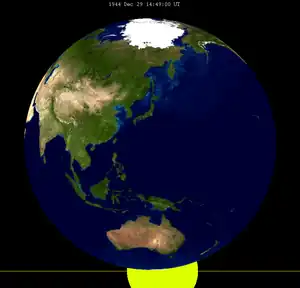
Related lunar eclipses
Lunar year series
| Descending node | Ascending node | |||||
|---|---|---|---|---|---|---|
| Saros | Date Viewing |
Type Chart |
Saros | Date Viewing |
Type Chart | |
| 109 | 1944 Jul 06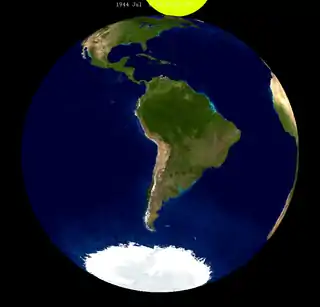 |
Penumbral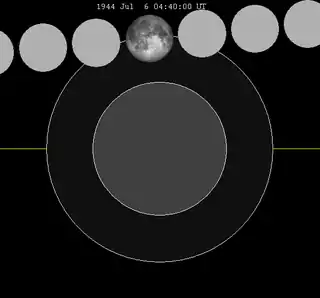 |
114 | 1944 Dec 29 |
Penumbral | |
| 119 | 1945 Jun 25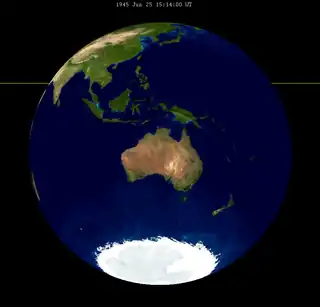 |
Partial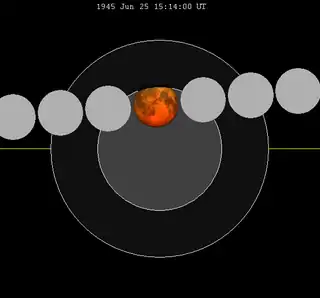 |
124 | 1945 Dec 19 |
Total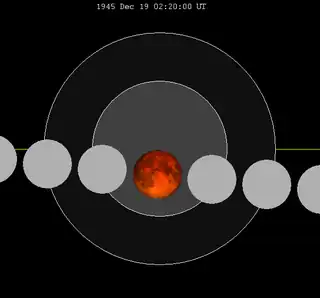 | |
| 129 | 1946 Jun 14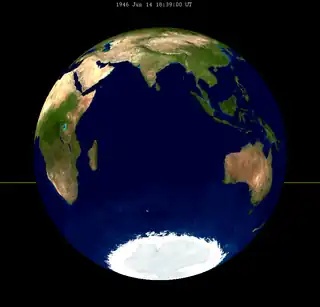 |
Total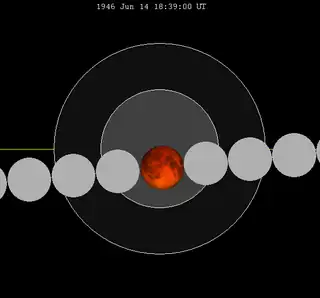 |
134 | 1946 Dec 08 |
Total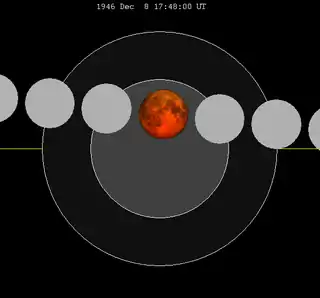 | |
| 139 | 1947 Jun 03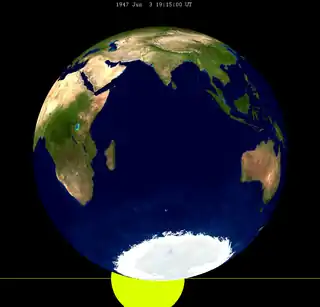 |
Partial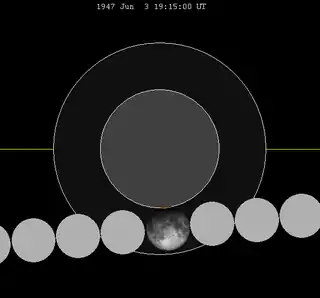 |
144 | 1947 Nov 28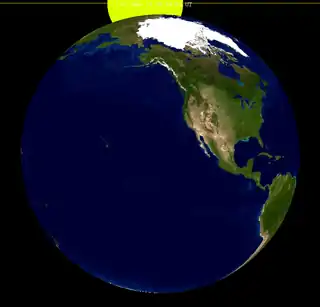 |
Penumbral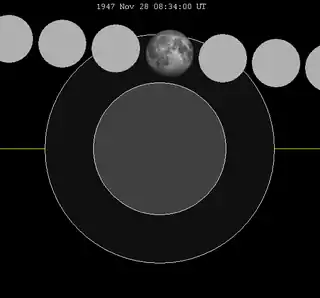 | |
Saros series
Lunar Saros series 114, repeating every 18 years and 11 days, has a total of 71 lunar eclipse events including 13 total lunar eclipses.
First Penumbral Lunar Eclipse: 0971 May 13
First Partial Lunar Eclipse: 1115 Aug 07
First Total Lunar Eclipse: 1458 Feb 28
First Central Lunar Eclipse: 1530 Apr 12
Greatest Eclipse of Lunar Saros 114: 1584 May 24
Last Central Lunar Eclipse: 1638 Jun 26
Last Total Lunar Eclipse: 1674 Jul 17
Last Partial Lunar Eclipse: 1890 Nov 26
Last Penumbral Lunar Eclipse: 2233 Jun 22
See also
Notes
External links
- 1944 Dec 29 chart Eclipse Predictions by Fred Espenak, NASA/GSFC

_(cropped).jpg.webp)
